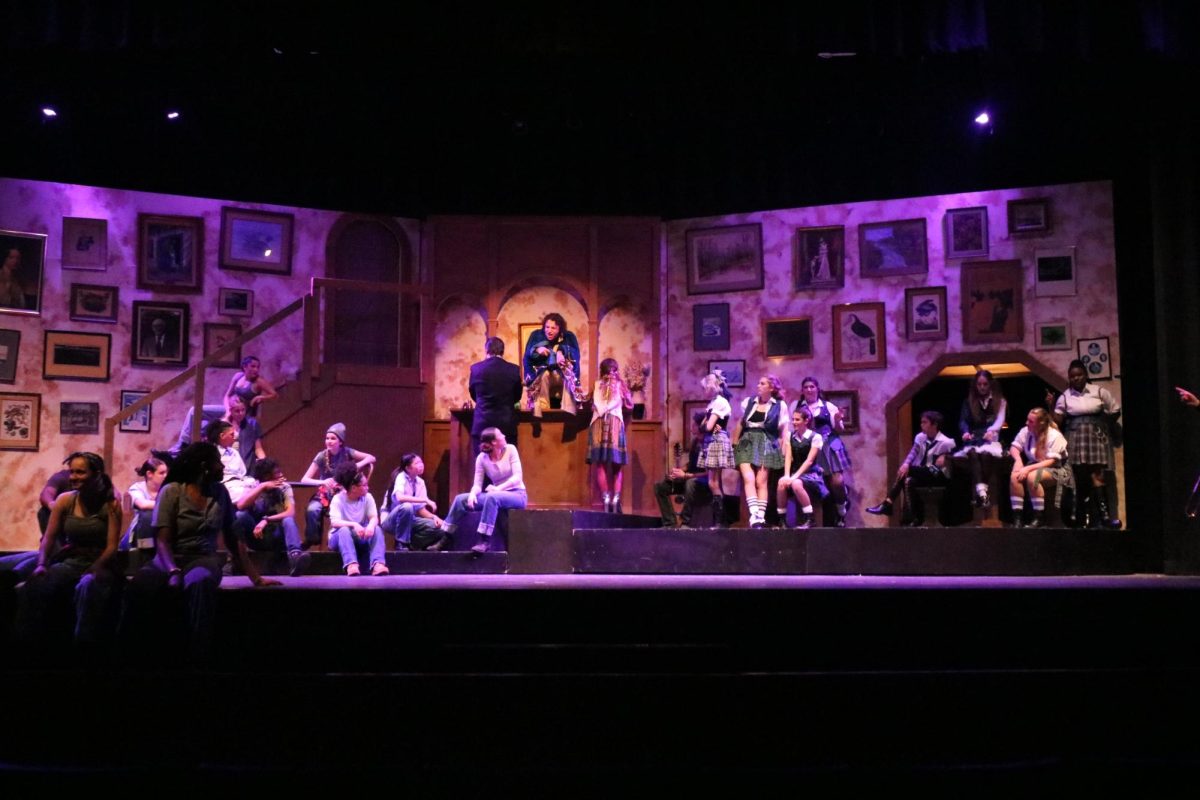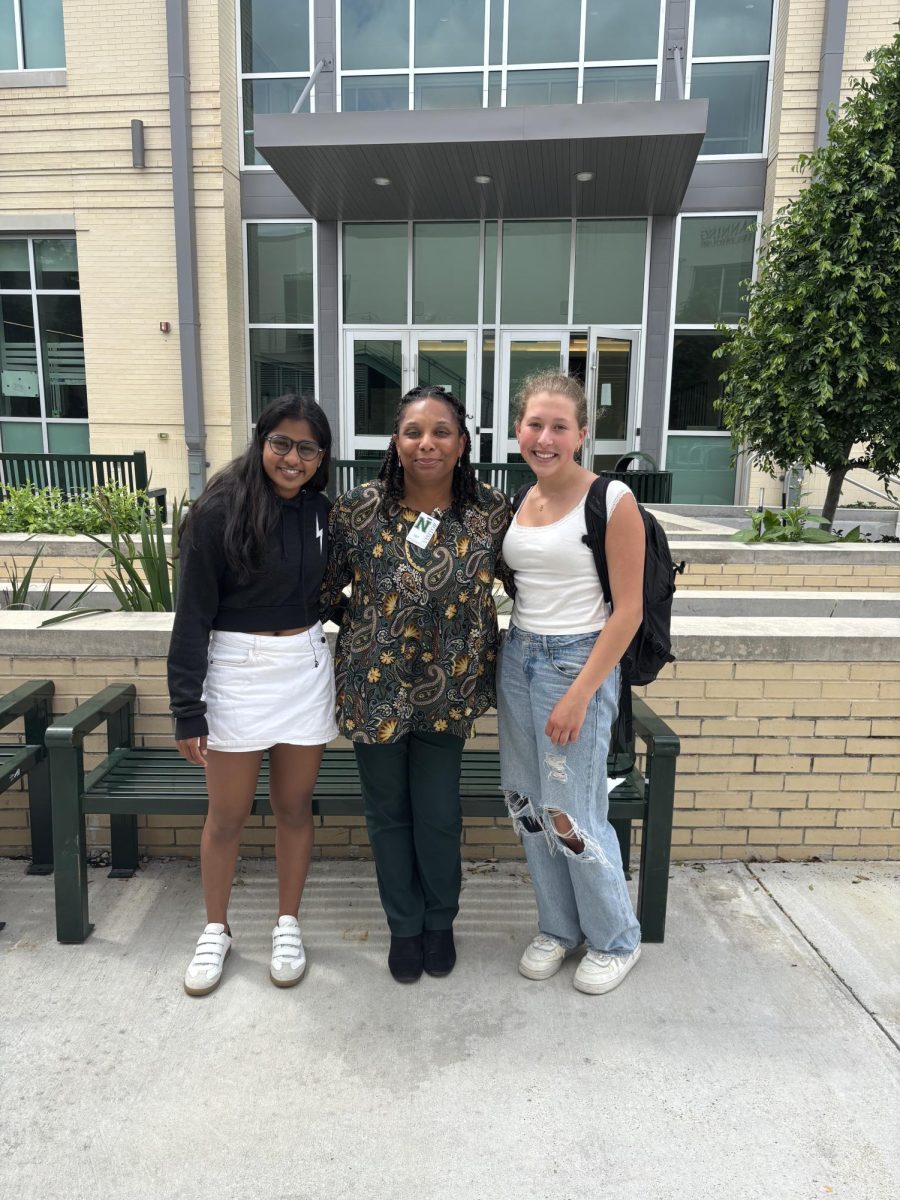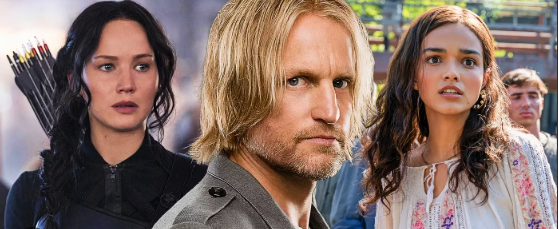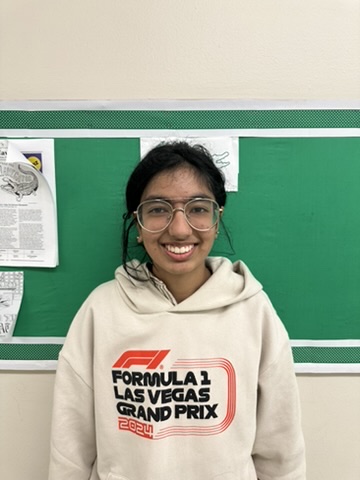Over Mardi Gras break I went to India for my cousin’s wedding. The wedding was at a beautiful beach resort in Goa, India, which overlooked the serene coastline decorated with coconut trees. After visiting my dad’s family in New Delhi, we reached Goa two days prior to the actual wedding. My cousin’s husband is from Assam, the very far northeast of India, and we belong to the UP-Punjab area (north central India); as a result, the wedding was a diverse setting that incorporated Punjabi, UP, and Assamese traditions.
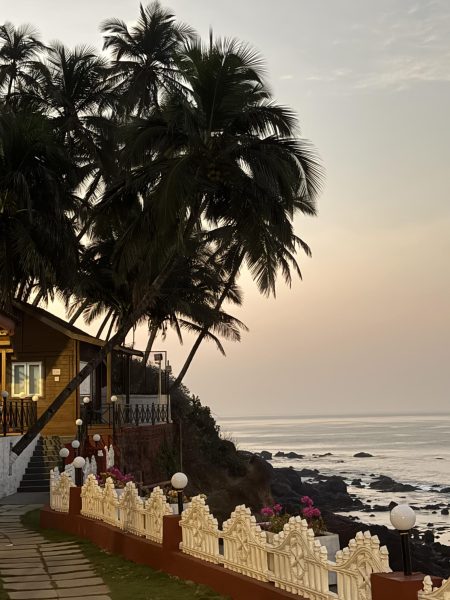
The wedding ceremony started with the Mehendi event, where the bride, with all her women friends and family members, got henna on their hands. Everyone was dressed in green to align with the color of ‘mehendi.’ This was a glamorous celebration with music, dance, lunch, and gift booths that gave away traditional Indian purses, earrings, and other small goodies. Additionally, there was an artist preparing bangles on-site for the guests.

Later, the evening opened up with the Sangeet function. The word ‘Sangeet’ means music in Hindi. As envisioned in Bollywood movies, the entire evening was filled with dances from popular Bollywood dances and songs, starting with the bride and groom and later joined by family and friends, including my eighty-year-old grandma.

After a much-needed night’s rest and delicious breakfast in the morning, we started the day with the Assamese function of Juroon. This is a ladies-only function and my family’s first Juroon. The women members from the groom’s side greeted the bride with jewelry and gifts.

Following Juroon was Tilak, when the bride’s brother(s) welcomed the groom.This ceremony was performed by my brother, Vihaan, and the bride’s cousin, Ramit. In Indian culture, cousins are considered siblings. Both the brothers put ‘tilak,’ red powder vertically on the groom’s forehead as a welcome to the family. This was followed by worship.

After the conclusion of Tilak, Haldi or the ‘turmeric’ ceremony started. The entire wedding gathering wore yellow attire; additionally, the bride and groom each sat in yellow tubs. We all put turmeric on the bride and groom as a significance of purification, blessings, and prosperity for the couple. There was music, dance, and food as well.

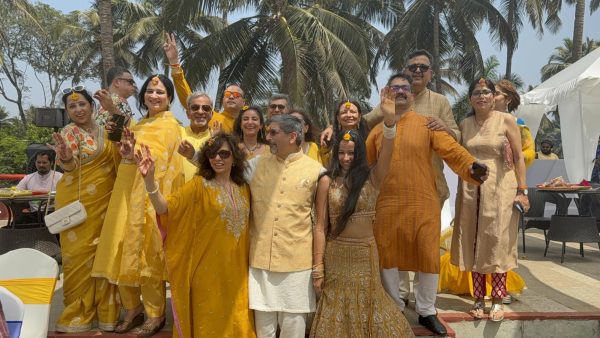
After a one-hour break, preparations for the actual wedding ceremony began. It was time for the baraat. Traditionally, baraat is a procession of the groom coming on a horse or elephant for the wedding, accompanied by his friends and family. Music and dance are the highlights of the baraat. However, my cousin’s groom came in a car. As a welcome to the baraat, the bride’s family greeted the baraat at the entrance of the wedding venue and garlanded the close relatives. Then started the actual wedding ceremony. Everybody walked to the altar and waited for the bride, who came to the ceremony site under a canopy of flowers held by her brothers with her sisters walking alongside her.
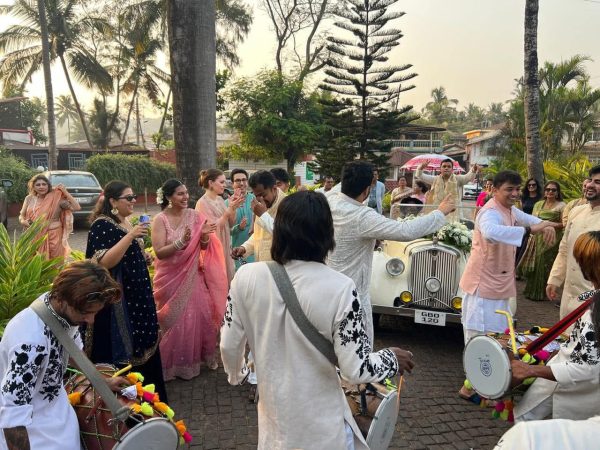
Bride’s cousins holding the flower canopy as she walks for the wedding. She is accompanied by her sisters.
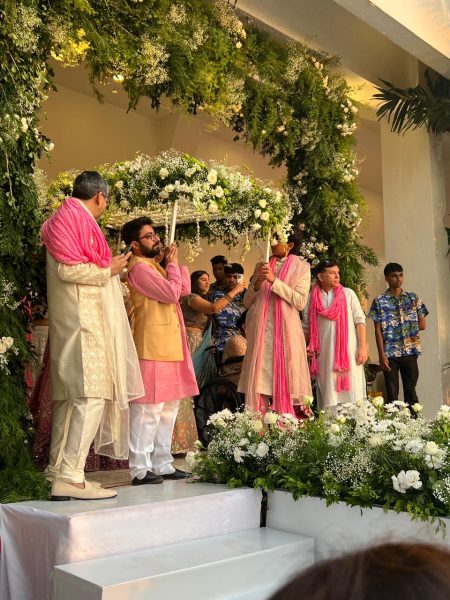
The wedding ceremony was initiated by ‘Jaimal’, where the bride and groom exchanged flower-decorated garlands. This was followed by the actual ceremony, during which both the bride and groom had to take off their shoes; traditionally the bride’s sisters steal the groom’s shoes and demand money to return them. The groom already planned ahead and had a strategy. So, my cousins, brother, and I spent the whole evening looking for them. The goal was to take the shoes and negotiate with him when he was to wear them again, at the end of the ceremony. During the wedding ceremony, the pandit (priest) chants holy ‘mantras and shlokas’ (wedding prayers) followed by ‘phera’ (the bride and groom walk seven sacred circles around holy fire), concluding the actual wedding ceremony. The evening ended with dinner, during which guests offered blessings to the newlyweds.
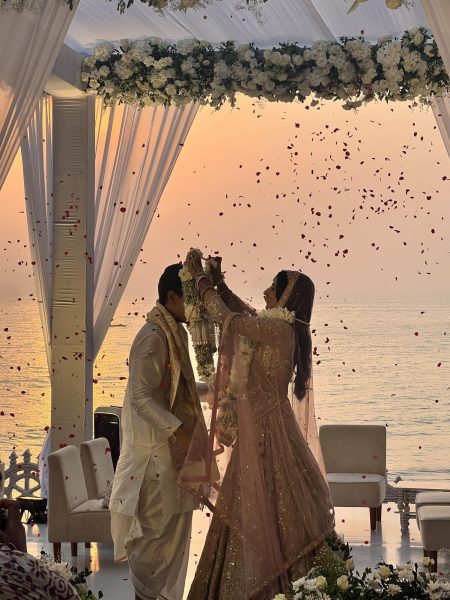
The following day we returned to Delhi and then flew to the groom’s family house at Tezpur, Assam. The groom’s family now welcomed the bride into their home and threw a reception party; this was a two-day event. Our wedding experience concluded with the reception. The next day I went to Delhi for the night and then started my journey back via Doha and Miami. As far as jet lag, it was not as bad as previous times. I think because the flight took a span of two days and a total airtime of approximately twenty hours spread across those two stops, I ended up getting more rest than usual. Maybe also because we used a different airline. Usually we go through British Airways via London-Heathrow, which is much shorter (approx. two hours less total airtime). Much to my delight, as an aviation nerd, we went through Qatar Airways. Overall, this was a very fun experience, especially since it was my first Indian wedding and my second wedding in general. It was interesting seeing how my culture does weddings and how they are similar/different to what’s depicted in movies and how different groups of Indians celebrate it differently.



